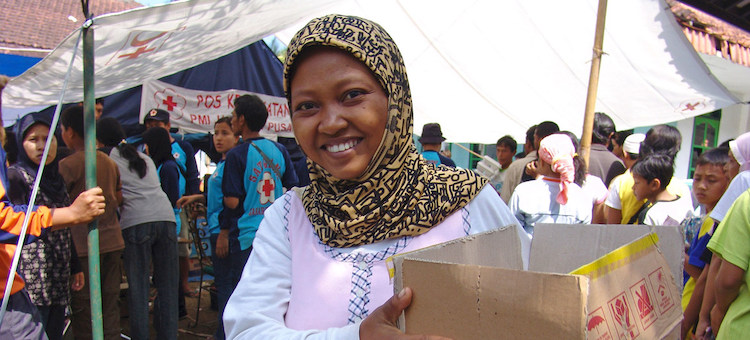By Santo D. Banerjee
NEW YORK (IDN) – “Hunger is an outrage in a world of plenty,” the UN Secretary-General António Guterres told the governing body of the Organization’s food agency, highlighting the important role of food security in cementing peace.
“An empty stomach is a gaping hole in the heart of a society. A stunted child’s growth in the mind is progress for her and for everyone,” the UN Chief attested to the Executive Board of the 2020 Nobel Peace laureate World Food Programme (WFP).
The background to these remarks on November 14 is that in developing countries, where the vast majority of the hungry live, about one in nine people is considered severely malnourished and hungry. More than 800 million people are currently living in poverty, which means that they do not have enough food to live healthy, active lives. Asia is the continent with the most hungry, accounting for two-thirds of that total, while sub-Saharan developing countries account for about one-third of world hunger, according to World Health Organization data.
In fact, Asia accounts for more than a third of the world’s population or 1.3 billion people. According to World Health Organization data, about one in four people in Sub-Saharan Africa is currently undernourished.
Some people assume that hunger in the world is a serious problem, because there is simply not enough food to feed everyone. However, any scientist who has studied this will tell you that the world has produced more than enough food to feed all the people on this planet. Nevertheless, Sub-Saharan Africa is one of the only countries in the world where, according to the World Hunger Index of the World Health Organization, more than one in four people is undernourished.
This level of hunger is due to the lack of resources to buy the food they want, as more than 800,000 people are severely food insecure and do not eat for a full day.
East Asia has continued the pattern of increasing development and access to food, and the number of people with unsafe diets has declined and will continue to do so. Some people have reached middle-class lifestyles and have been left in both food insecurity and poverty.
Increasingly, the challenges facing people and policymakers in the region are not about good nutrition, but about a diet that does not lead to obesity or has an excessive impact on the environment. Around 2 billion people worldwide are in difficulty, including people described by the UN as “food insecure,” which means that they have difficulty accessing food.
The report also confirms that women are more likely to face moderate to severe food insecurity than men, and that little progress has been made on this front in recent years. Overall, the findings warn that the UN’s goal of eradicating hunger by the end of the twentieth century, that is, by 2030, is becoming increasingly unlikely.
The report estimates that an unfolding pandemic and the associated economic recession will drive malnutrition in the United States to a record high of 83.132 million people by 2030. COVID-19 pandemics have hit countries with widespread poverty hard, the report says, but they have only made the situation worse. Every year, between 83 and 132 million people suffer from malnutrition, according to the Food and Agriculture Organization of the United Nations (FAO) and the World Bank.
About a quarter of Africa’s population could be starving by 2030, already above the global average of 19.1%, according to the FAO.
Since then, food insecurity has increased worldwide and has increased most strongly in Africa and Latin America, particularly in Latin America. In Africa, the number of hungry people has fallen by 8 million since 2010, although the continent still accounts for more than half of the world’s undernourished population. The trend in Latin America and the Caribbean has intensified, with 1.5 million in the last two years, according to the FAO.
More than half of the world’s malnourished people – more than 3.5 million – live in middle-income countries.
For the first time in the annual report, the agency showed that hunger is not limited to people who regularly forego sufficient food. Globally, according to the FAO, 690 million people go to bed with an empty stomach every night.
Since 1990, when the United Nations set a goal of halving the number of hungry people by 2015, some 2 billion people have been liberated. But since 2014, the number of hungry people has been rising slowly. In 2019, she reported that over the last three years, after almost a decade of progress, food insecurity, the size and intensity of hunger have increased and the number and quality of life of people suffering from hunger have decreased.
The global hunger crisis is growing and now threatens, like the COVID 19 pandemic, the lives of vulnerable communities around the world. Join us in this mission and help us to provide critical support to those who need it most.
The number of people in the world who are not getting enough to eat has increased, and there is no way to ensure that no one is starving, according to a new UN report. The world has made steady progress to ensure that people do not starve and that children have enough nutrients to grow and prosper, but there are still too many people on the brink of starvation and too few resources to ensure that they are starving. [IDN-InDepthNews – 02 December 2020]
Photo: Displaced victims of the West Java tsunami in Indonesia collect World Food Programme (WFP) food aid. Credit: WFP/Barry Came.


